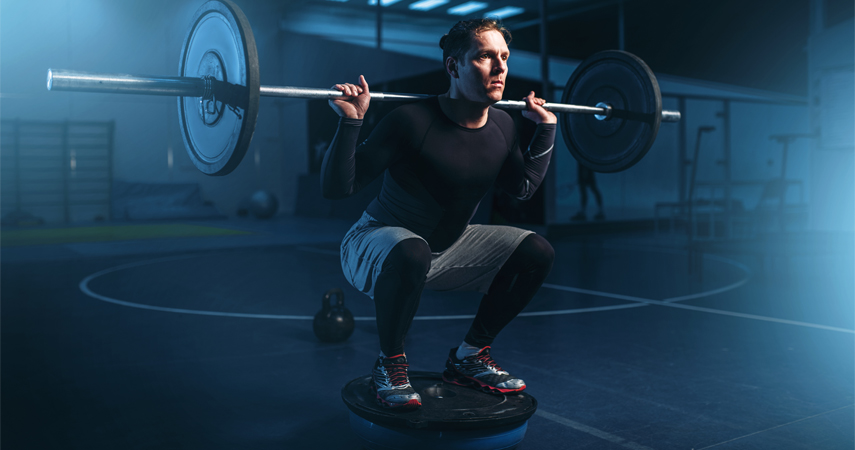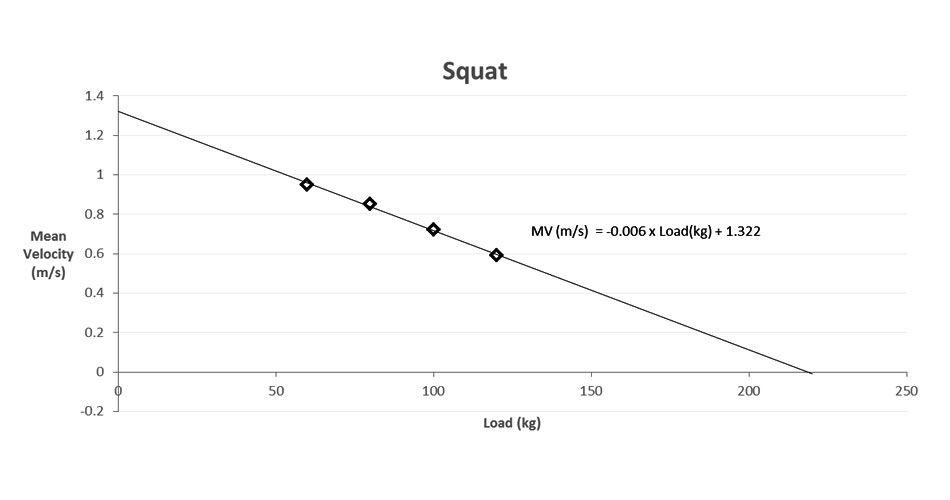Planning the Strength Training (Part 1)
CHARACTERISTICS OF THE LIFTER
According to Mark Rippetoe, the author of Practical Programming book, the lifters can be generally classified to four groups according to their level: novice, intermediate, advanced and elite. When planning strength training, one should take into account the level of the lifter, because there are distinct characteristic within each group. The planning of strength training for each group will be considered at the end of this article.

Taken from Rippetoe, Mark (2007). Practical Programming. Aasgaard Company
STRENGTH TRAINING GOALS
Depending on the author, there can be numerous goals pursued with strength training. I tried to review them in my last article entitled Concurrent strategies in strength training.
It can be said that reaching of the different strength training goals (and thus motor qualities) is based on utilization of different loading protocols (weight, reps, sets, tempo, rest, etc.) or methods. So, each of the methods aimed at reaching different strength training goal utilize different loading protocols. This is based on the repetition continuum, or the ’idea’ that different goals can be achieved utilizing different reps per set. There is a dynamic interaction between the variables of reps, sets and loads. The load used (% of 1RM) ultimately determines how many reps per set are done. Reps per set (or set time) ultimately determines how many total sets must be done. The interaction between the three will affect what adaptation is seen. Although not all authorities agree, there is thought to be a continuum of adaptations which may occur with different repetition sets. This continuum is called repetition continuum.
Without going into unnecessary theoretical discussion, I will use the following classification of strength training goals:
- Maximal and Relative Strength
- The goal is the development of maximal strength
- The method used for developing this motor quality is Maximal Effort, or ME
- Explosive Strength
- The goal is the development of explosive strength, or the ability to produce great force in least amount of time (RFD – Rate of Force Development)
- The method used for developing this motor quality is Dynamic Effort, or DE
- Futher classification can include the development of explosive strength and reactive/elastic strength (plyometrics), althought this is not that important for this discussion
- Muscular Hypertrophy
- The goal is the development of muscular hypertrophy, without going into the debate of sarcoplasmatic vs. myofibrilar hypertrophy
- The method used for developing this motor quality is Submaximal Effort, or SE (mostly for functional or myofibrilar hypertrophy) and Repetition Effort, or RE (mostly for total or sarcoplasmatic hypertrophy).
- Muscular Endurance
- The goal is the development of muscular endurance, fat loss, anatomic adaptation and sarcoplasmatic hypertrophy (depending on the context). Some also put ’vascularization’, ’glycogen depletion’, ’mitochondria development’ as the goal of this method
- The method used for developing this motor quality is Repetition Effort, or RE
WHAT THE HECK IS THE PERIODIZATION ANYWAY?
Well, I guess there is no concise answer to this question. A lot of people define periodization differently, taking into account different parts of planning process. So, I am not so brave to give my own definition of what periodization really is. Anyway, when discussing periodization we must differ between, as I love to call them that way, Three Zoom Levels.
First Zoom Level
§ The planning of LTAD (long term athlete development), Olympic-year and annual training plan. This includes determination of preparatory phases, competition phases, transition phases and their structures depending on the competition schedule, age and level, along with the sport/position of the athlete. This also includes factors like whether/climatic, training facilities available, competition schedule, number of peaks and the duration of those peaks athletes must achieve, etc, etc. One may add the determination of training components (goals) or motor abilities that needs to be addressed to achieve increase in performance
Second Zoom Level
§ Planning of the development of multiple training goals (motor abilities & skills) within each period defined by First Zoom Level. Here we can differ between traditional approach (concurrent or complex-parallel), block and emphasis/pendulum approach IMHO. The choice is dependent on the First Zoom Level (which defines how much time do we have, conditions, etc), number of training goals that must be developed and when, and their compatibility, the level of the athlete, etc.
Third Zoom Level
§ Progression and programming of development of each training goal (motor-ability). Basically this determines how loading protocols should be organized and how much: means (general/specific/competition), methods, loads (intensity, frequency, volume, recovery, etc). This includes the approach that uses delayed training effect via acute over-reaching too. This should be based on the previous Zoom Levels, athletes level, his work capacity (ability to sustain training loading and recover from it), supplementation, injury toleration and the optimal loading for each training goal.
It may sound funny that I have picked the term Zoom Level, but if you have ever used microscope or more possibly Google Earth, you know what I mean. The word Zoom can be easily substituted with the word Planning, and voila, the meaning is instantly evident.
Basically, the numerous factors determine Periodization (whatever that may actually be anyway) used. There is no good or bad, just optimally picked based on those factors involved (context), goals and athletes.
When dissecting and analysing training systems and discussing periodization and planning we must use differ between Zoom Levels. Different authors stick to one Zoom Level without considering other levels of the zoom. When the the periodization is mentioned, most of the authors talk about preparatory, competition and transition periods (First Zoom Level). Some of them talk about load progression, like 3+1 (3 weeks loading, 1 week unloading), waves and undulations and stuff (Third Zoom Level). You have to go from whole to parts (Zoom Level) and from back to start (goal oriented, time oriented, what you want to achieve and when, and then plan it backward) to discuss periodization and to actually plan your training system.
Recently there was a great deal of discussion and confusion when it comes to Second Zoom Level. With most of the sports there are numerous training goals (motor abilities) that need to be achieved/developed in order to improve performance. Some of those goals are compatible and some are not, some lean on each other (related and dependent on each other) and some of them don’t. The question that arises is how to approach the development of those multiple goals in predefined time and context defined by First Zoom Level? IMHO there are two distinct approaches: parallel and serial development.
Parallel approach develops all defined motor abilities at the same time. Depending on the definition of the ’same time’ this approach may have different variations. For example, all defined motor abilities may be developed in one training session, one training day, couple of training days and one training microcycle (usually a week).

Serial approach develops motor abilities one-after-another in sequential/consecutive fascion. Depending on the order of the development numerous variations can be indentified.

This is the first error that I see people do when discussing the Second Zoom Level. What people are forgetting is that there is a continuum between these two extremes, and, more importantly – the parallel and serial approaches are vague terms (!!) that depends on classification of the motor abilities and training goals that must be developed in the first place.

Traditional training approach utilize Parallel development, hence the term concurrent and complex-parallel. And now comes the confusion! There is a lot of information out there that states that traditional approach is actually sequential (serial). Sequential models originated post complex-parallel, and to address some of the shortcomings of this system with respect to elite athletes. Anyone who try to portray concurrent methodologies as something new, all the rage, the funeral of sequential models, is, in fact, wrong. Traditional training approach is/was actually a concurrent approach, where all the abilities were developed simultaneously.
With elite athletes, problems with traditional training approach started to emerge. In order to continue to improve at a given motor ability, elites would need more and more volume of training and since all abilities are developed simultaneously, excessive (total) volume was needed. This was time where doping was necessary evil to sustain tremendous training volume, along with becoming a full-time athlete, training couple of times per day. There is a trend in volume reduction after the AAS ban and prohibition.
Complex-parallel approach as any other has it pro’s and con’s that should be taken into account when chosing your approach. Depending on the level of the athlete, sport, time available and other factors, complex-parallel approach may be the best solution there is. Some important factors must be taken into account when using this approach, like optimization of training time and motor abilities, design of the microcycle depending on the compatibility of motor abilities, wave-like loading, etc. Anyway, this approach is one of the best solution when working with kids and low level athletes and with some more advanced athletes that don’t have much time to develop motor abilities (take for an example professional soccer player who have 1-2 months of preparatory period).
As a side note, complex-parallel training systems in non-strength sports is very different than complex-parallel (concurrent) strength training in powerlifting, weightlifting and strongman training. First of all, in strength sports the barbell is the sport, its the iron game and the purpose of the training is to improve the lifts by improving various motor abilities that determine successful performance, like technique, absolute and relative strength, speed, mass, sticking point, lock-out, grip, gear work, etc, while in non-strength sports, strength training have a purpose of injury-prevention, increase on-field performance, etc. In non-strength sports this is far more simpler, with much less details. This is why most, if not all, athletes from non-strength sports never reach advanced level of strength training. They usually need novice and intermediate planning with couple examples of more advanced planning of strength training. They need to juggle with more motor abilities besides strength. This is why their Second Zoom Level is more ’zoomed out’ when it comes to strength training compared with strength sport athletes which need more detailed ’zoom level’.
Block approach was designed with advanced athletes on mind, who cannot develop everything at once. They need to prioritize the training goals or they will suffer from overtraining and limited progress. So, during Block training one or more compatible motor abilities are developed, and after some time the training ’switches’ to another set of abilities. One training block is a time period of unidirectional and concentrated loading aimed at developing one or more compatible motor abilities. With this approach, total training stress is less when compared to complex-parallel approach, but individual stress (aimed at one or more motor abilities) is greater, hence the term concentrated loading. Block training utilize the following training principles:













Responses